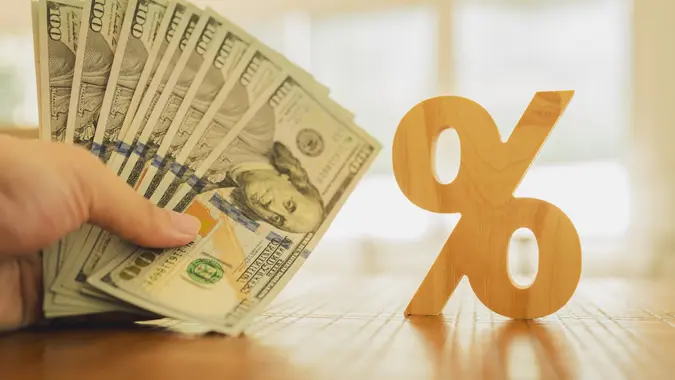Amazon Scammers Swiped $27M in One Year — Here’s How to Protect Yourself

Commitment to Our Readers
GOBankingRates' editorial team is committed to bringing you unbiased reviews and information. We use data-driven methodologies to evaluate financial products and services - our reviews and ratings are not influenced by advertisers. You can read more about our editorial guidelines and our products and services review methodology.

20 Years
Helping You Live Richer

Reviewed
by Experts

Trusted by
Millions of Readers
Amazon topped another list this week, but you can bet the online retail giant won’t be bragging about it.
See: Beware: Pandemic-Related Scams Have Cost Consumers Over Half a Billion So FarFind: 18 Online Shopping Traps and Scams To Watch Out For
The Federal Trade Commission on Wednesday said Amazon topped the list of impersonated businesses during a one-year period from July 2020 to June 2021, with roughly one in three people who reported a business impersonator saying the scammer pretended to represent Amazon. Apple finished a distant second.
The Amazon scammers bilked victims out of more than $27 million over the course of the year, the FTC noted on its website. The median loss per person was $1,000. Reports about Amazon impersonators surged more than five-fold during the period. About 96,000 people filed reports about being targeted, and nearly 6,000 said they lost money.
This is not necessarily surprising news. As GOBankingRates reported, online purchase scams are the second-riskiest type of fraud after employment scams, according to a recent Better Business Bureau Scam Tracker report.
Amazon impersonators typically get your attention with messages to call them about suspicious activity or unauthorized purchases on your Amazon account. After you call the number, a fake Amazon rep tricks you into giving them remote access to your computer or phone to fix the problem and provide a refund. You’re then told that the rep keyed in too big a refund, and to return the difference. Some scammers even gain access to your online bank accounts and move money around to make it look like you have more money in the account than you should.
Here are a couple of other popular scams:
- Telling victims to share numbers on the back of their gift cards that they say are “security codes” or “blocking codes” intended to block hackers, when the numbers are actually used to redeem the card amount.
- Text messages that say you’ve won a raffle for a free product from Amazon, then asking you to enter your credit card information for free products that don’t exist in a raffle that never happened.
The best way to avoid scams is to follow the FTC’s provided tips:
- Never call phone numbers that are provided in texts, emails, calls or messages on social media that you don’t recognize. And never click any links.
- If you receive an unexpected offer and are unsure of its authenticity, take the time to research it by visiting the company’s website and looking up its contact information. Don’t trust phone numbers or links you see in search results.
- Never allow remote access to your devices unless you contacted the company first, using its real number.
- Never pay an unknown seller by gift card, and don’t send pictures of gift cards, either.
See: How To Protect Yourself From Social Security ScamsFind: Target, Amazon & 4 More Retailers That Will Reward You for Turning in Your Old Stuff
Visit ftc.gov/scams to learn more. If you spot a scam, report it to the FTC at ReportFraud.ftc.gov.
More From GOBankingRates
 Written by
Written by 

























